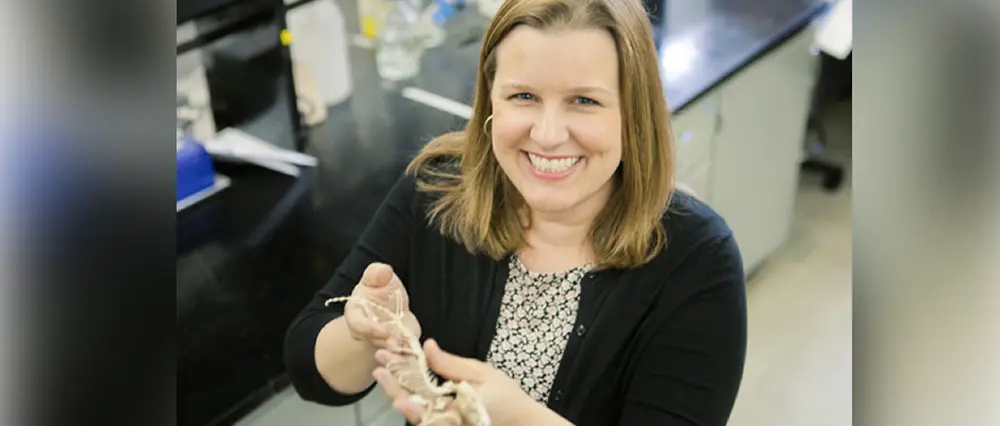
Natural selection is a race to reproduce, a competition between individuals with varying traits that helps direct the evolution of a species. As scientists begin to explore the complex networks of genes that shape the form and function of each individual, they can ask a new question about evolution: How do the structures of these gene networks determine which individuals appear on the starting line, silently influencing evolution before competition has even begun?
University of Illinois researchers Karen Sears and Zoi Rapti, along with collaborators at Illinois and four other institutions, have addressed this question by exploring the gene network that guides limb development in mammals.
They found that during early development, when limbs are first forming, gene activity in this network varies little; later, when detailed limb structure is beginning to emerge, the network changes in structure, and gene activity varies more widely. This pattern may make it easier for evolution to tweak, rather than remodel, limb structure.
“When we look at the evolutionary record of animals, we find that there are some forms that have evolved repeatedly, and some that have never evolved,” Sears said. “I want to know the role that development has in generating these patterns.”
Sears, an associate professor of animal biology, and Rapti, an associate professor of mathematics, led the study, which was published in PLOS Genetics (DOI: 10.1371/journal.pgen.1005398). Sears is a member of the Carl R. Woese Institute for Genomic Biology (IGB).
Many genes encode proteins that influence or regulate each other’s activity. These functional connections, and the genes that participate in them, can be imagined as the threads and intersections of a spider’s web. Some of these interactions are stronger or weaker than others, and in the network they comprise, some genes have more connections than others. Computational models can mathematically describe this network structure.
Sears, Rapti, and colleagues wanted to know what happens when a chance event, like a mutation, changes the activity of one gene. How much will the whole network, and the resulting course of development, be affected?
Using published data on developmental gene interactions, they created a model of how genes interact during early and late stages of limb development. The model allowed them to pluck at the spider web of genes, and watch how much the rest of the web is disrupted.
The researchers found that in early limb development, the network resists the spread of change; even when one gene’s activity is altered, the network as a whole continues to function almost as usual. Later in limb development, however, the architecture of the network is different, and a change in one gene’s activity has a more widespread impact.
In addition, an empirical investigation of gene activity during limb develop in four different mammals—mice, bats, opossums, and pigs—showed that activity of developmental genes differs more in late development than in early development. This is true when comparing individuals of the same species, and also when comparing gene activity across species.
Together, these theoretical and empirical findings supported Sears’ strongest initial hypothesis, that genomic mechanisms restrict the degree to which early limb development can vary in mammals. From an evolutionary perspective, this makes sense.
“If early development is disrupted, limb development will be severely disrupted, and it is very unlikely that the resulting limb structure will be selectively advantageous, said Sears. “Later development, which doesn’t have as many downstream impacts, might be expected to be more free to vary because the consequences of that variation would be less dire.”
Sears, Rapti, and coauthors were brought together by the Illinois BioMathematics Program, an NSF-funded project that promotes research collaboration among biology and mathematics undergraduates and faculty members. The BioMath Program has led to a variety of innovative research efforts. Sears is a member of the Regenerative Biology & Tissue Engineering research theme and an affiliate of the Gene Networks in Neural & Developmental Plasticity research theme at the IGB.